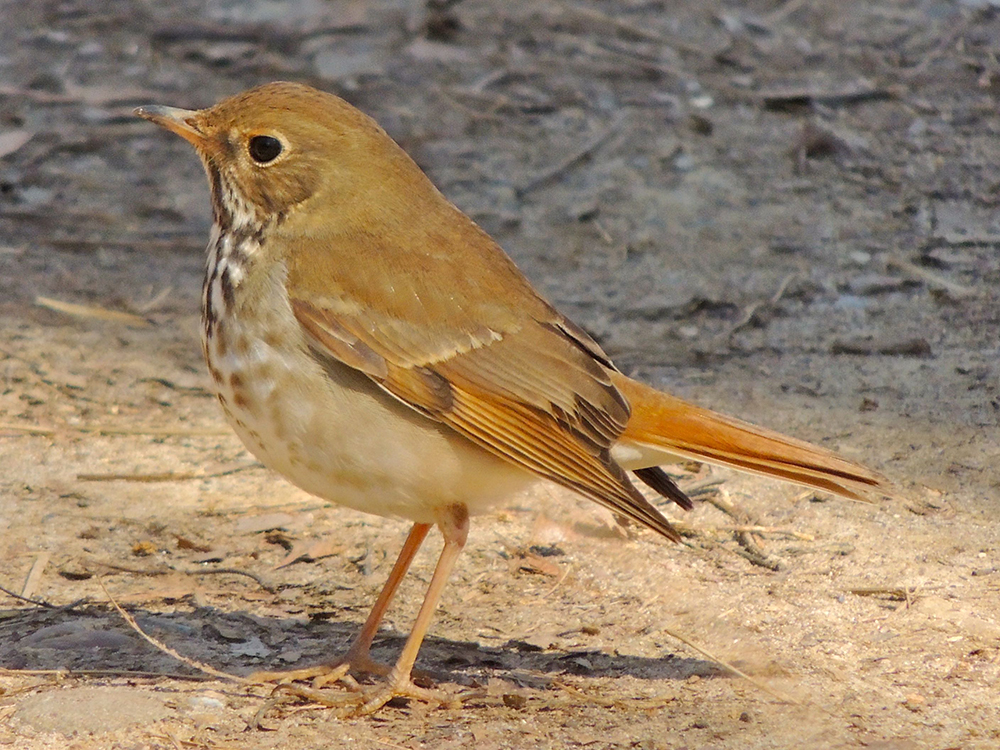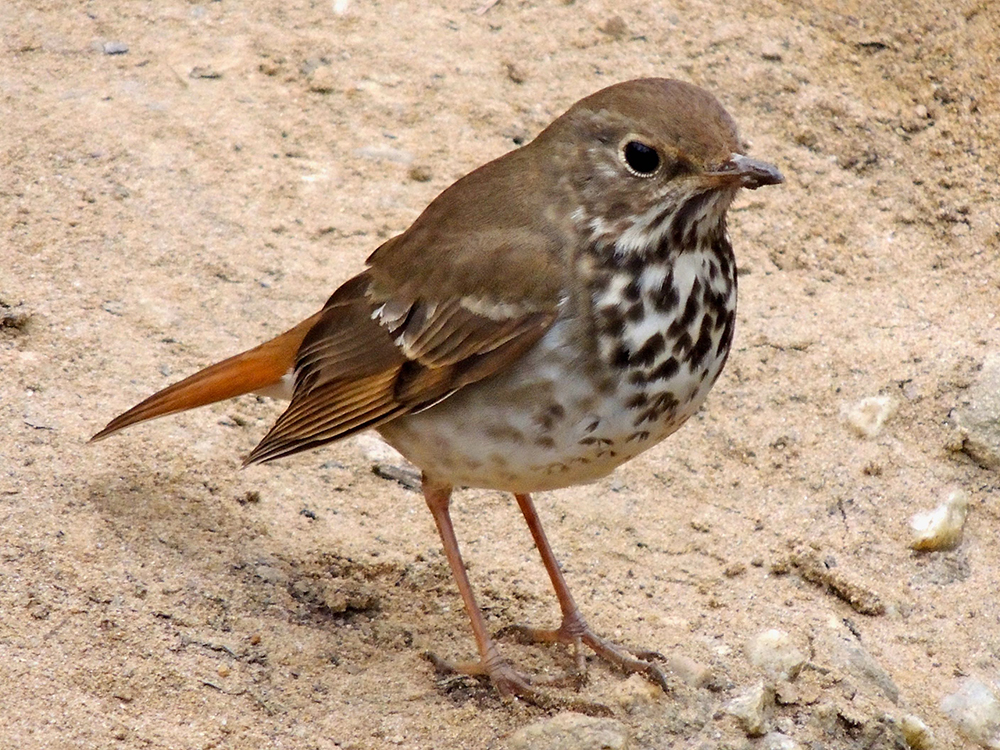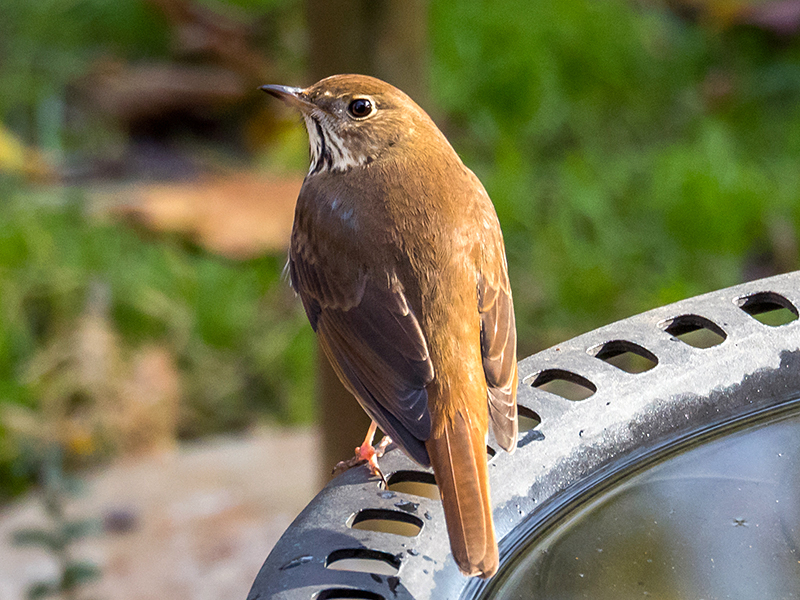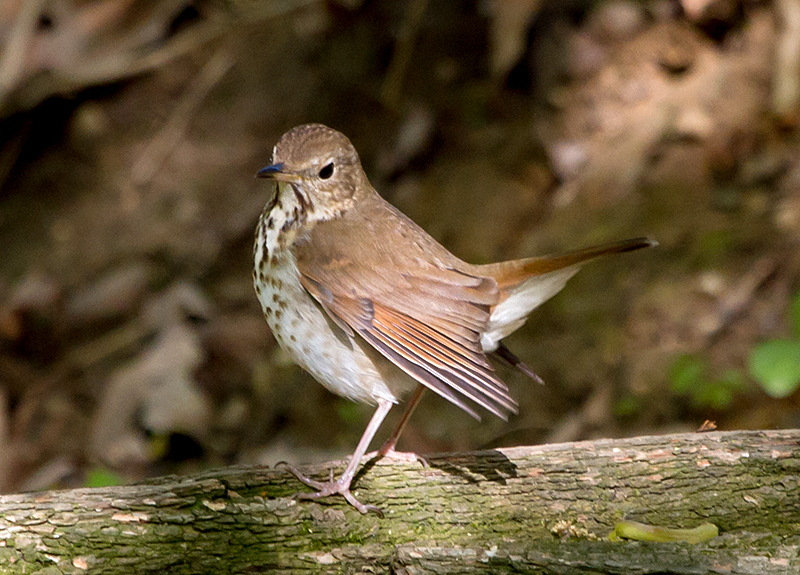| Early Spring Date: | March 1 |
| Late Spring Date: | May 24 |
| Best Dates to See in Spring: | March 30 - May 7 |
Spring: Most migrant birds who visit Monticello Park are flying north from a considerable distance and either stay in the Washington metro area to breed or continue their northward journey after replenishing their energy supply. Some Hermit Thrushes spend the winter in the Washington area, including at Monticello, before leaving for their nesting grounds in the north. The best time to look for them at the park is in the second half of April. The numbers increase during April when migrant Hermit Thrushes arrive at Monticello from the south. The eastern population of Hermit Thrushes breeds in Canada, the northern United States, and the Appalachian Mountains. Except for a few stragglers, most Hermit Thrushes leave Monticello before other migrant spotted thrushes arrive.
Fall: In the fall, Hermit Thrushes begin to arrive at Monticello during the second week in October, and their numbers increase during the remainder of the month. Some are passing through, and only the ones who will stay through the winter are generally seen after the end of the month.
Where to See Them in the Park
You can see Hermit Thrushes anywhere in the park, but the best place to look is on the ridge, especially near the fence line by the Kust property. They sometimes go into the stream to bathe and drink.
Physical Description

Male and female Hermit Thrushes look similar, and adult plumage stays the same throughout the year. The best fieldmark for identifying a Hermit Thrush is the bright rufous tail.

The spotting on the breast is much heavier than on a Veery.

The back is a warmer color than a Swainson's or Gray-cheeked, and the tail color is similar to the back of a Wood Thrush.

Hermit Thrushes frequently flick their wings as if nervous, and they often will quickly raise their tail and then slowly lower it. The tail behavior can be an important clue for identifying a bird seen in poor light.
Vocalizations
Hermit Thrushes do not sing much at Monticello. Their flutelike song has a questioning tone, starting low and ending higher. You can better appreciate some of the subtleties of the song when it is slowed to half and quarter speed. They have a variety of call notes, one of which sounds like a startled screech. Other call notes sound like low-pitched clucks.
Hear the vocalizations of the Hermit Thrush.Notes
The Hermit Thrush is the state bird of Vermont. It was named by Alexander Wilson, who considered it a silent and reclusive species who likes the gloomy woods. Setting aside the anthropomorphizing, the spotted thrushes all have fairly solitary habits. One rarely sees groups of them.
Origin of Names
Common Names: Hermit from their allegedly solitary habits. The origin of thrush is unclear, but it might come from the Anglo-Saxon thryce, which means thrush.
Genus Name: Catharus means pure, possibly in reference to thrush song.
Species Name: Guttatus means drop, from the drops (spotting) on the breast.
Hermit Thrush video footage
Return to the Index
